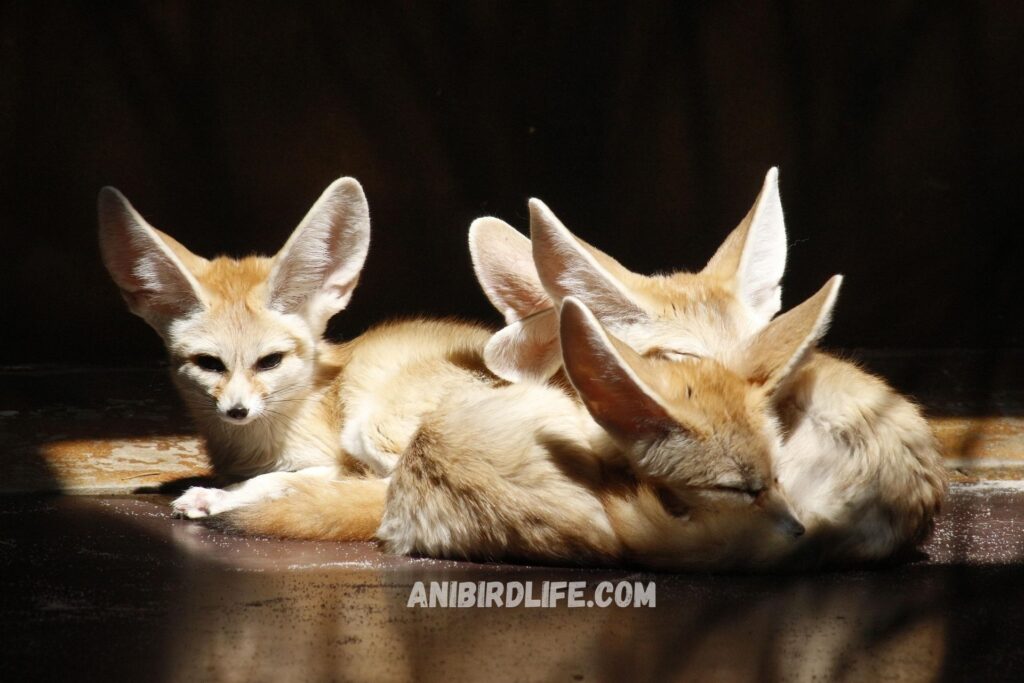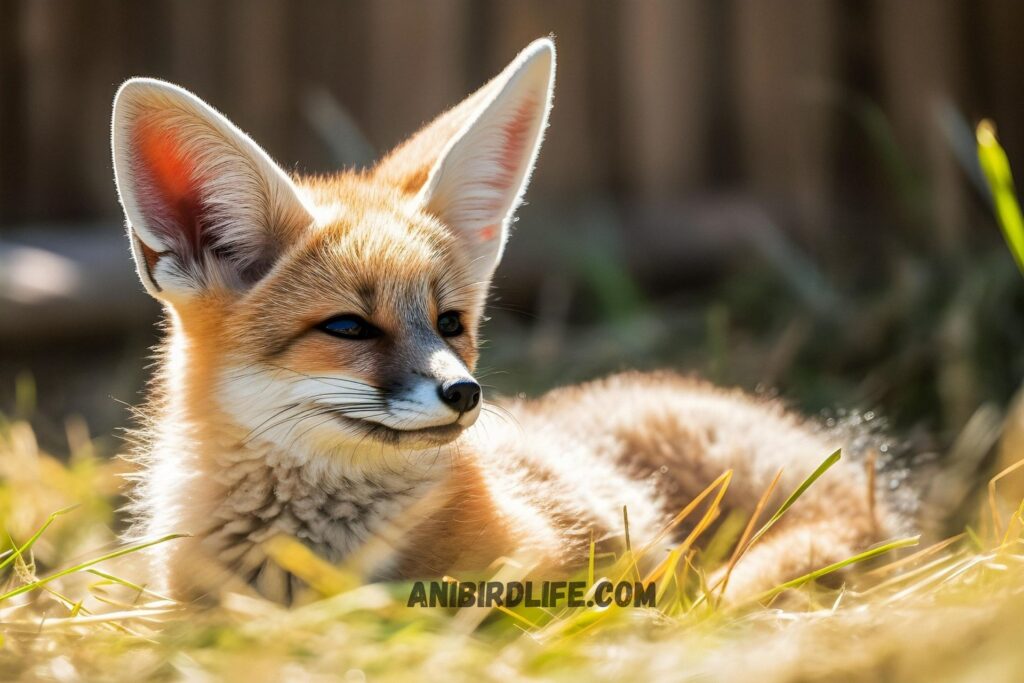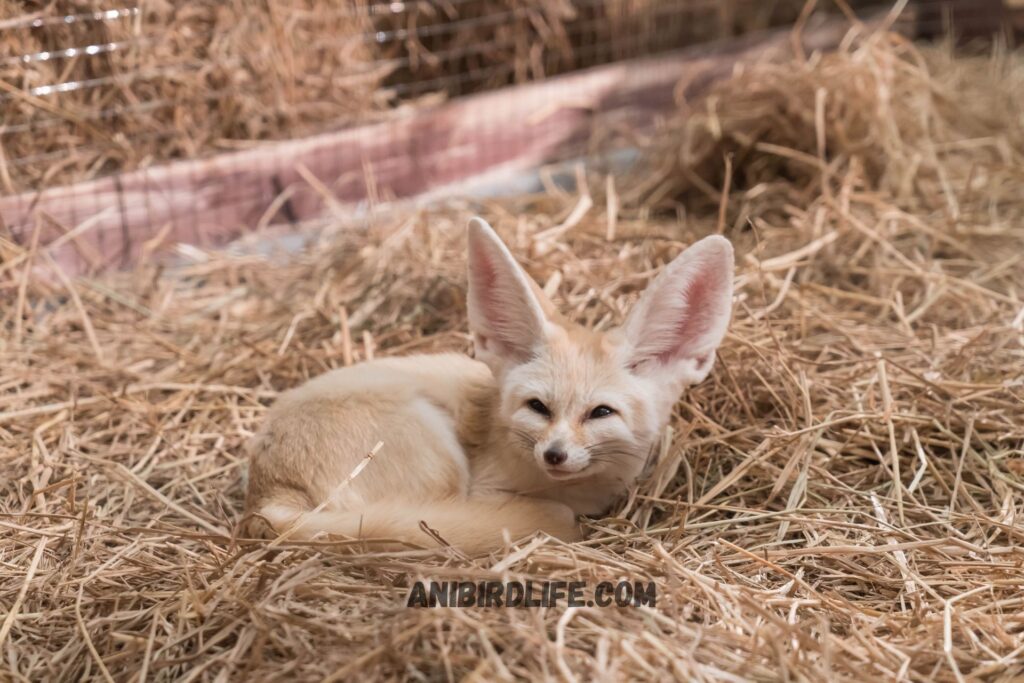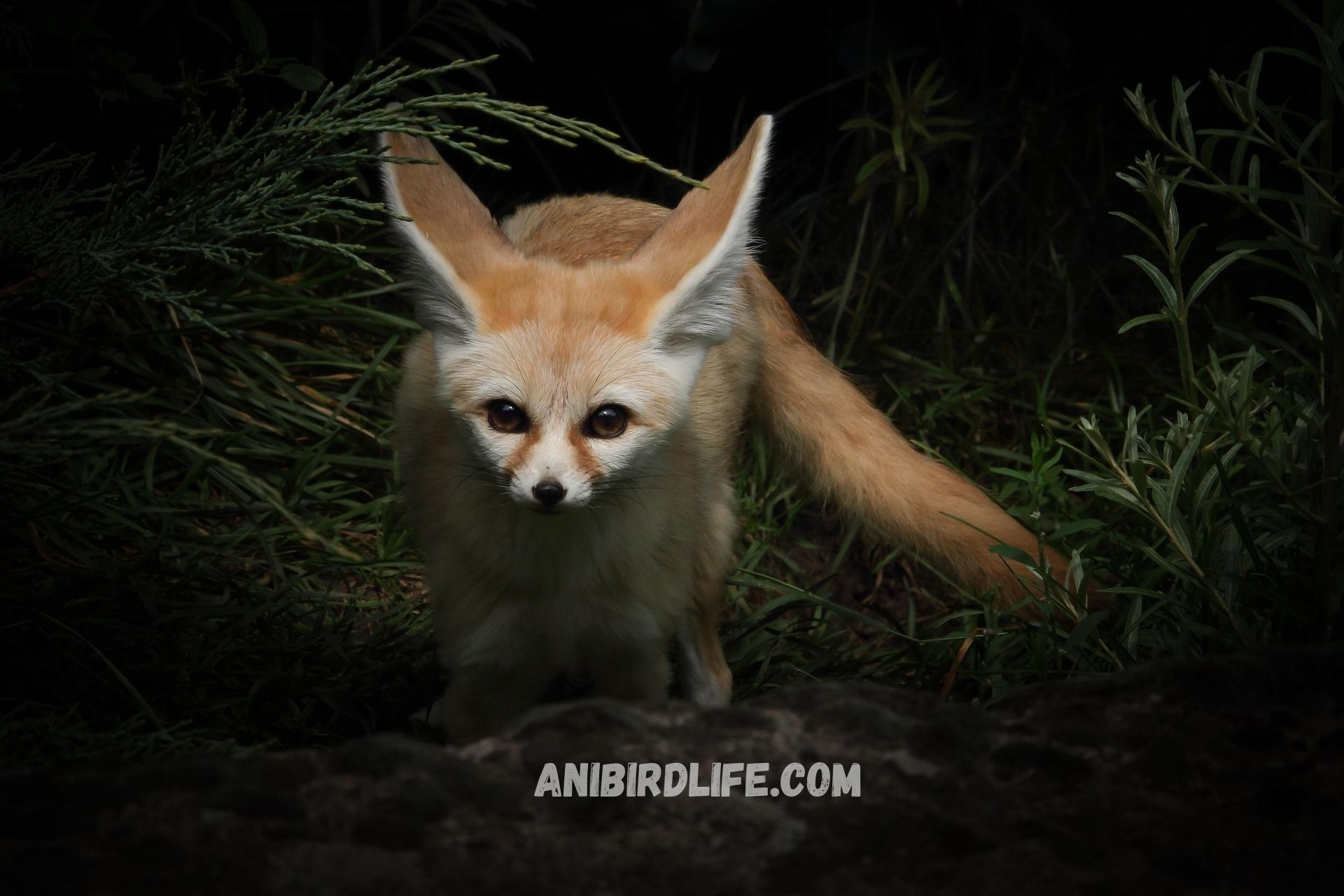Native to the North African deserts, the Fennec fox (Vulpes zerda) is a tiny, nocturnal fox. Animal enthusiasts all throughout the world have fallen in love with this desert dweller because of its adorable nature, small size, and enormous ears.
Don’t be fooled by its adorable appearance, though; the Fennec fox is a proficient predator that has evolved to thrive in one of the world’s most hostile habitats. Here are some reasons why the Fennec fox is one of the most fascinating and adorable desert predators.
Those Cute Ears Have a Function
The largest characteristic of the Fennec fox is its massive ears, which can reach a length of 6 inches. These ears are an essential survival gear, but they also contribute to its irresistible attractiveness. In the sweltering desert heat, they aid in heat dissipation, keeping the fox cool. They can also detect prey moving underground or in the dark, including insects, rodents, and small birds, because to their extraordinary hearing.
The Fennec fox’s ears are a marvel of evolutionary adaptation, and they are not merely ornamental. These ears serve as natural radiators, assisting in controlling the fox’s body temperature in the arid climate, where daytime highs can reach above 100°F.
The fox is cooled by the expansion of the blood vessels in its ears, which release heat. To survive in such a harsh environment, this adaptability is essential.
Furthermore, the Fennec fox has extremely keen ears that can detect even the smallest sounds of prey moving beneath the sand. Even in total darkness, they can seek and catch food with incredible accuracy thanks to their keen hearing.

A Small Frame Constructed for the Desert
The Fennec fox is the smallest canid species in the world, weighing about two to three pounds and growing to a height of approximately eight inches. It is an effective hunter because of its small size, which allows it to maintain its agility and save energy.
Its thick coat protects it from the harsh heat of the day and the chilly desert nights, and its sandy-colored fur helps it blend in well with the desert scenery.
In the desert, the Fennec fox’s diminutive stature is a major benefit. It can thrive in an environment with limited resources since it needs less food and water than larger creatures. It is an efficient predator because of its small weight, which also allows it to move swiftly and silently.
The fur of the fox is yet another amazing adaptation. Because the sandy hue mixes in so well with the desert landscape, it offers superior camouflage to both predators and prey.
The fox’s thick fur keeps it warm on chilly desert evenings when temperatures can drop considerably in addition to shielding it from the sun’s harsh rays.
The Nocturnal Lifestyle: An Ingenious Survival Technique
Because it is mostly nocturnal, the Fennec fox is able to avoid the Sahara Desert’s intense daytime heat. Using its acute senses, it searches for food in the dark. It is a versatile and resourceful predator due to its varied food, which includes insects, plants, eggs, and small mammals.
The Fennec fox’s nocturnal lifestyle helps it avoid the day’s intense heat, which can be fatal. Rather, it goes out at night when it’s colder and the prey is more active. Additionally, this way of living lowers the chance of running across predators, many of whom are diurnal.
Given the lack of food in the desert, the Fennec fox has a very flexible diet. In addition to small animals, birds, and reptiles, it consumes a wide range of insects, including locusts and beetles. Additionally, it eats plant material, such as leaves, roots, and fruits, which supply vital moisture. Its ability to adapt its food is essential to its survival in such a harsh environment.

A gregarious and playful disposition
Being quite gregarious, fennec foxes frequently live in small groups of ten or more. They use a range of vocalizations, such as squeaks, purrs, and barks, to communicate. They are even more charming to onlookers because of their lively nature, which is especially evident in young kits.
For Fennec foxes, social ties are essential. A mated partner and their children make up their family groups. Their burrows can be large and intricate, and these communities collaborate to dig and maintain them. In addition to offering protection from the heat and predators, the burrows offer a secure environment for raising their young.
For these social ties to be maintained, communication is essential. Fennec foxes employ a variety of vocalizations, ranging from fun chirps to alarm calls, to communicate various signals. They also convey their feelings and intentions through body language, like as ear placement and tail wagging.
It’s entertaining to watch Fennec foxes play, especially the young ones. They practice the skills necessary for survival by playing games of chase, acting out fights, and other activities. Additionally, this fun makes the group’s social ties stronger.
Amazing Adaptations for Life in the Desert
The fox is an expert at surviving in the desert because to a number of special adaptations:
Its thick paw fur offers traction when digging and shields its feet from the hot sand.
Effective Water Use: By getting moisture from their diet, fennec foxes may live without free-standing water.
Burrowing Ability: To avoid the heat and defend themselves from predators, they excavate enormous underground dens.
There are several uses for the Fennec fox’s thick paw hair. It offers traction when digging and protects the feet from burns caused by the hot sand.
The fox’s ability to dig is amazing; it can quickly construct a burrow to hide from predators or escape the heat. With several entrances and chambers, these tunnels can reach a depth of three feet and span more than thirty feet.
The Fennec fox has evolved to survive in the desert, where water is a limited resource. It requires less free-standing water because it gets the majority of its moisture from the food it consumes. Because of its adaption, it can live in places with almost little water.

A Sign of Beauty and Resilience
The Fennec fox’s perseverance is demonstrated by its capacity to flourish in such a hostile habitat. It is a remarkable marvel of nature because of its social behavior, hunting prowess, and physical adaptations. Its indisputable cuteness has also made it a popular topic for documentaries, wildlife photography, and even as a pet (though they need specific care).
The beauty of the Fennec fox is found in both its look and its capacity to endure and flourish in one of the world’s most hostile settings. Its adaptations are evidence of nature’s inventiveness and the strength of evolution.
Conclusion: The Ideal Combination of Adorability and Survival
A fascinating predator with amazing adaptations that enable it to thrive in the desert, the Fennec fox is more than just a lovely face. Its small stature, large ears, and playful nature make it one among the world’s cutest creatures, and its ability to hunt and survive demonstrates its strength and intellect.
The Fennec fox is a genuine desert emblem that merits respect and protection, regardless of whether you’re a nature enthusiast or a lover of cute animals.
FAQs
1. What is the diet of a Fennec fox?
Being omnivores, these foxes eat a variety of foods. Insects, tiny rodents, birds, and eggs are their main food sources. Additionally, they eat roots, fruits, and plants, which give them the hydration they need in the desert.
2. How do desert-dwelling Fennec foxes manage to survive?
The following adaptations enable fennec foxes thrive in the desert:
- Their big ears improve hearing and dissipate heat.
- They are protected from harsh temperatures by their thick fur.
- They can get water from their diet, which lessens their demand for free-standing water; they build tunnels to avoid the heat and predators.
3. Do fennec foxes make suitable pets?
Despite their obvious cuteness, most people do not want to keep them as pets. It can be difficult to satisfy their particular dietary, environmental, and social needs in a domestic context. They may also display characteristics that are challenging to control in a home setting because they are wild creatures.
4. What is the lifespan of a Fennec fox?
The average lifespan of a Fennec fox in the wild is ten years. They can survive up to 14 years or longer in captivity if given the right care.
5. Why are the ears of Fennec foxes so large?
There are two primary uses for the Fennec fox’s big ears:
Heat Dissipation: By expelling extra heat, the ears aid in controlling body temperature.
Improved Hearing: They can identify prey moving underground or in the dark thanks to their keen ears.
6. In what locations are Fennec foxes found?
The Sahara Desert and other North African deserts are home to fennec foxes. They can also be found in parts of the Arabian Desert and the Sinai Peninsula.
7. Do fennec foxes face extinction?
Fennec foxes are not listed as endangered at this time. However, hunting, the illicit pet trade, and habitat loss pose dangers to them. For their populations to stay stable, conservation measures are crucial.
8. What kind of communication do Fennec foxes use?
Barks, purrs, squeaks, and whines are some of the vocalizations that fennec foxes employ to communicate. They also communicate with other foxes through scent marking and body language.
9. Are Fennec foxes able to ascend?
Fennec foxes are adept climbers, yes. They can easily ascend rough terrain and dunes because to their muscular legs and sharp claws, which helps them avoid predators and locate food.
10. Which animals are Fennec foxes’ primary predators?
Larger predators like eagles, jackals, and hyenas pose a threat to fennec foxes. They are able to evade many of these threats because of their nocturnal lifestyle and burrowing habits.
